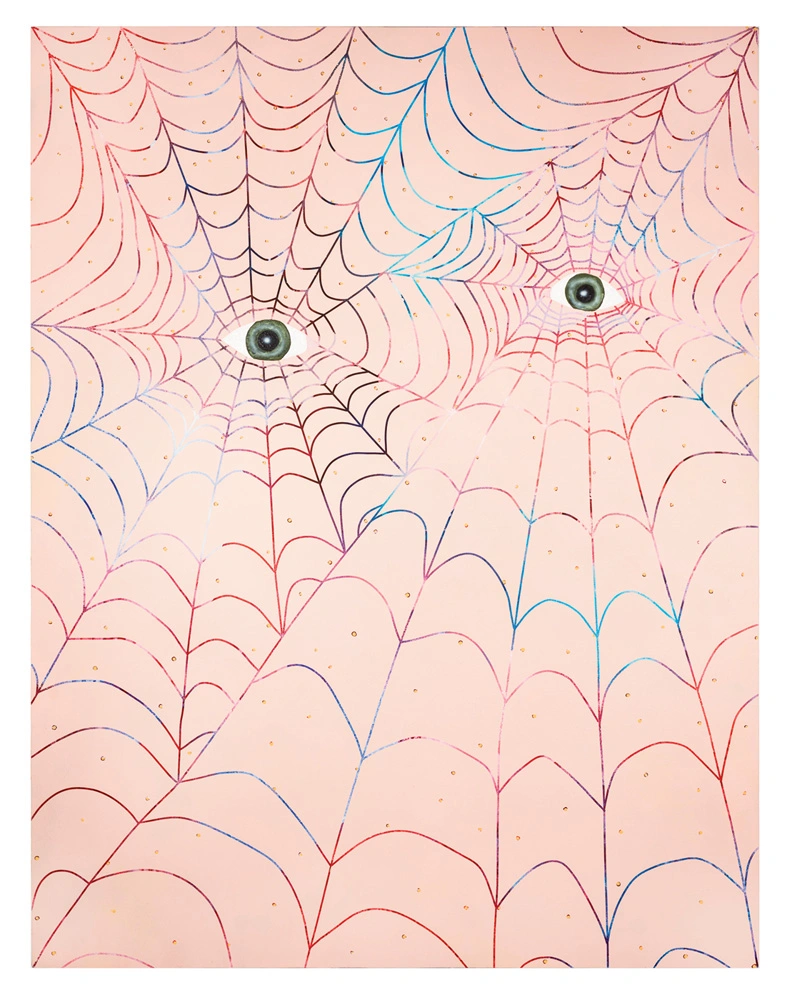ART WRITING
REVIEWS

Lane Hagood
Art in America, June 2014
Visitors to Lane Hagood’s recent show had to pass between two literary references in the gallery’s front space before getting to the artist’s six new paintings (all 2014). To the left, the exhibition’s title, “The House of the Solitary Maggot” (taken from a book by the visionary American writer James Purdy), was emblazoned on a wall; to the right was the gallery’s front counter where, in lieu of the standard press release, there were copies of a poem by Chilean poet Nicanor Parra titled “Warning to the Reader.” Given these literary straits, and considering this 30-year-old, Houston-based painter’s past penchant for loading his shows with images from his pantheon of culture heroes, it was a surprise to encounter paintings so free of allusion and citation, so nearly formalist in their means.
Although every canvas featured images of human eyes within a network of lines, often suggestive of a spider’s web, they were wonderfully various. In Sky Web, a single blue eye sits at the center of a radiating network of white lines that seem to be suspended against a vista of blue sky and cottony clouds. Next to it hung Skin Web, which features a pair of green eyes, weirdly misaligned, that are ringed with a multicolored spider’s web against a pinkish-tan ground. Speckling the ground, which is close to the dirty pink of late Guston, are dozens of small spots of color, each partially obscured with a tiny dab of yellow paint. The title invites us to read them as skin blemishes, but they also draw attention to how the painting was made. As with most of the other works in the show, Skin Web began with a ground of atmospheric, spray-gunned color. Using tape to mask out the web structure around the eyes, the artist then covered the canvas with the pinkish “skin” layer. As the tape was removed, the lines of the web took on the modulating colors of the ground. At first it seems as if the blemish spots, like the web lines, were masked with tape, thus revealing portions of the underpainting. In fact, the spots—comically “fixed” with the dabs of yellow—were applied over the skin layer in a very understated kind of trompe l’oeil. In several other paintings, Hagood discreetly uses iridescent paint on the grounds, while in Jah Web, a dense Miró-esque composition throbbing with 16 small eyes, the bottom layer of paint was applied in broad horizontal bands so that the web emerged in the Rastafarian tricolor of red, yellow and green. Equally compelling were paintings that declined chroma, like the white-and-gray White Noise Web and the black-on-black Dark Web.
One of the many impressive aspects of this show was how Hagood artfully spliced together several different styles of painting—the atmospheric grounds, the hard-edge webs, the wonky Surrealist eyes—without falling into mere eclecticism. Equally impressive is his willingness to experiment: despite the consistent eye-and-web motif, this was a boldly unformulaic show. For each painting, Hagood came up with different problems and different solutions, or, as a line in the Nicanor Parra poem has it, “a heap of contradictions.”